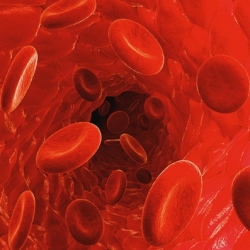
In a brief talk, Bachelet said DNA nanobots will soon be tried in a critically ill leukemia patient. The patient, who has been given roughly six months to live, will receive an injection of DNA nanobots designed to interact with and destroy leukemia cells, while causing virtually zero damage in healthy tissue.
According to Bachelet, his team have successfully tested their method in cell cultures and animals and written two papers on the subject, one in Science and one in Nature. Contemporary cancer therapies involving invasive surgery and blasts of drugs can be as painful and damaging to the body as the disease itself. If Bachelet’s approach proves successful in humans, and is backed by more research in the coming years, the team’s work could signal a transformational moment in cancer treatment.
If this treatment works this will be a medical breakthrough and can be used for many other diseases by delivering drugs more effectively without causing side effects. George Church indicates the smart DNA nanobot has applications beyond nanomedicine. Applications where there is any need for programmable and targeted release or interaction at the cellular or near molecular scale.
At the British Friends of Bar-Ilan University’s event in Otto Uomo October 2014 Professor Ido Bachelet announced the beginning of the human treatment with nanomedicine. He indicates DNA nanobots can currently identify cells in humans with 12 different types of cancer tumors.
Within 1 or 2 years they hope to have spinal cord repair working in animals and then shortly thereafter in humans. This is working in tissue cultures. Previously Ido Bachelet and Shawn Douglas have published work on DNA nanobots in the journal Nature and other respected science publications.
One Trillion 50 nanometer nanobots in a syringe will be injected into people to perform cellular surgery. The DNA nanobots have been tuned to not cause an immune response. They have been adjusted for different kinds of medical procedures. Procedures can be quick or ones that last many days.
See original article for videos on the subject
